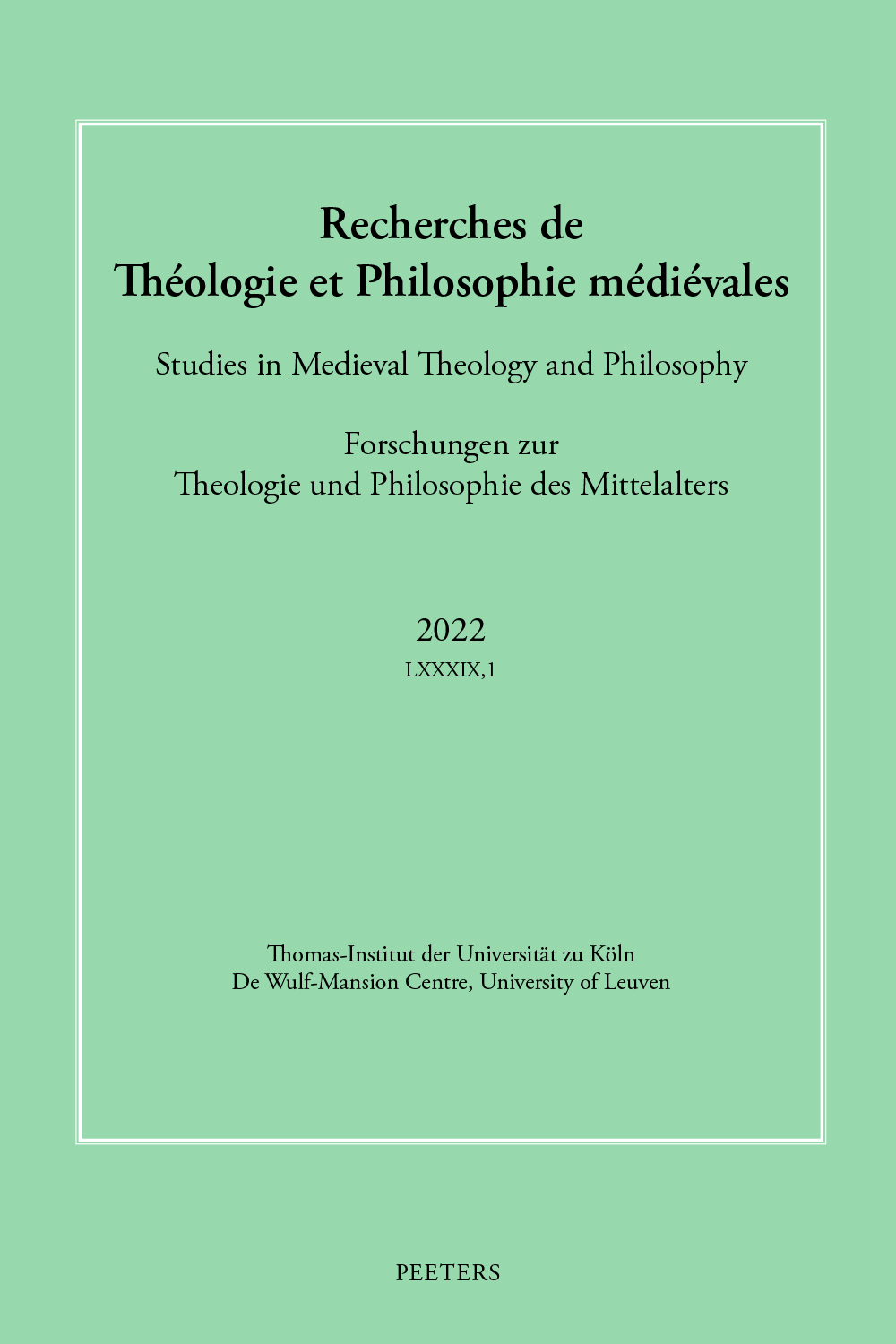next article in this issue  |

Preview first page |
Document Details : Title: First-Person and Third-Person Views in Arabic Philosophy of Mind Author(s): BENEVICH, Fedor Journal: Recherches de Théologie et Philosophie Médiévales Volume: 90 Issue: 1 Date: 2023 Pages: 1-47 DOI: 10.2143/RTPM.90.1.3291865 Abstract : There are two main methods in philosophy of mind, the first-person view and the third-person view. The third-person view draws conclusions about human nature and the nature of the mind and the mental solely based on the third-person observation of actions, attributes, and behaviours ascribed to humans. The first-person view or introspection suggests turning to our own private experiences of ourselves and to our phenomenal mental states. In this paper, I argue that there is an important transformation in Arabic-Islamic philosophy of mind between the end of the eleventh and the end of the twelfth centuries CE. The traditional physicalist understanding of human beings as corporeal structures (binya) or composites (ǧumla), which clearly dominated Muslim kalām by the eleventh century, meets Avicennian dualism. I will argue that before this meeting happened, the physicalism of kalām was almost exclusively based on the third-person methodology. But the encounter with Avicennian dualism changes the situation. Avicennian dualism is largely based on introspection. As a result of the encounter between Avicenna and kalām, a new method comes about. It combines the elements of the third-person view and introspection, with introspection gradually occupying a dominant position in post-Avicennian philosophy of mind. |
|


